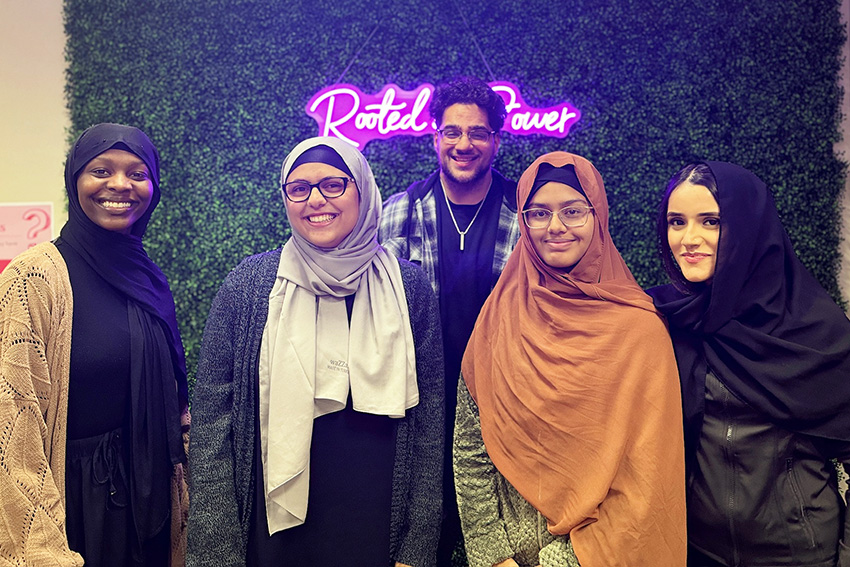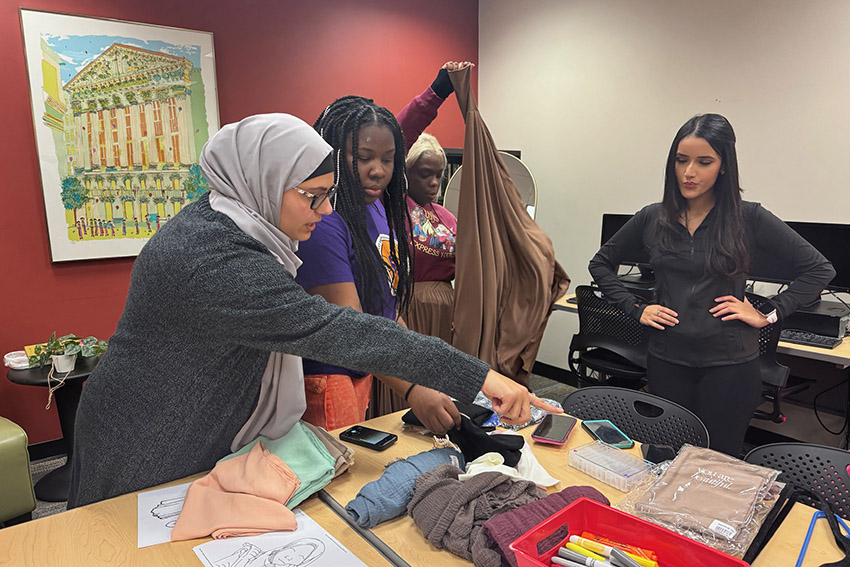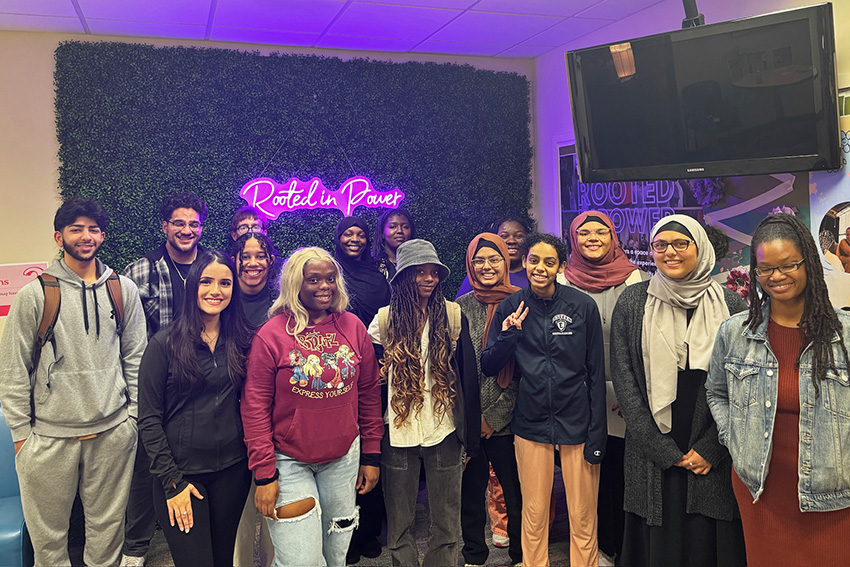- Apply
- Visit
- Request Info
- Give
Published on December 06, 2023
Poli Sci Students Take Lead in the Muslim Student Association
Students learn about women in Islam

The Muslim Student Association invited students at Eastern Connecticut State University to join them on Nov. 9 in discussing cultural ideas about women in Islam, dispelling many myths regarding the religion’s treatment of women. In an interactive walk-through activity, students were given time and space to process the information provided. Muslim students also made themselves available to answer questions and to openly communicate about their faith.
Many of the myths focused on ideas of the education of women and the Quran's view of women in comparison with men.
According to the Quran, the main religious text of Islam, education is regarded highly by Allah, the Arabic term for God. All Muslims, regardless of gender, are instructed to seek knowledge and to push themselves and apply themselves in all that they do.
In fact, the oldest university in the world — Al Qarawiyyin University in Morocco — was founded by a Muslim woman named Fatima al-Fihri in the ninth century. It was the leading educational and spiritual center during the Islamic Golden Age from the eighth to the thirteenth century. As a free university, it immersed students in all subject matters with the intent of serving the community.

Additionally, according to members in Eastern's Muslim Student Association, men in Islam are taught to show women respect. In the Quran, Muslim wives are described as “the queen of the house,” making them equal to their male counterparts. The Prophet Muhammad writes that men should “fear Allah in respect of women.”
Muslim men are also instructed not to lust after women, an ideal known as the “hijab of the eyes.” This allows both genders to view each other as people rather than objectifying them. For those who are more familiar with the Christian Bible, it is similar to a verse from the book of Matthew: “But I say to you that everyone who looks at a woman lustfully has already committed adultery with her in his heart” (Matthew 5:28).
In addition to this overlap, the Abrahamic religious figure Mary (or as she’s known in Islam, Miriam) is prominent throughout the Quran, acting as a role model for other worshipers of Allah.
One of the most prominent myths brought up during the discussion was the role of Islamic religious garments, such as the hijab. It is widely believed that religious coverings act to oppress women, but the Muslim students informed those present that this is not the case. Much like the Christian veiling or the kippah and mitpaḥat in Judaism, many Muslim women choose to wear various head and body covers as a way of displaying their faith.

Instead of acting as a show of male domination, the students explained, Islamic religious coverings allow women to represent themselves as a person beyond their physical body. Those who get to know them do so as a result of their personality and interests as opposed to what they look like.
In this way, the students revealed the role of promiscuity in modern women’s oppression. While it arose from the forced modesty feminist movements sought to rectify, concerns about the potential for female body exploitation have risen. In either case, the students noted that choosing to dress modestly or otherwise should always be made by the woman.
Students were also invited to try on a hijab with the help of Muslim students, allowing them to see the intricate process Muslims go through when getting ready. Those participating enjoyed the experience of trying on veils of various colors and styles.
The event allowed students who may be unfamiliar with Islam to develop an understanding and appreciation of the religion, helping them to be better friends and peers to the Muslim students on campus and Muslim people worldwide.
Written by Marcus Grant

